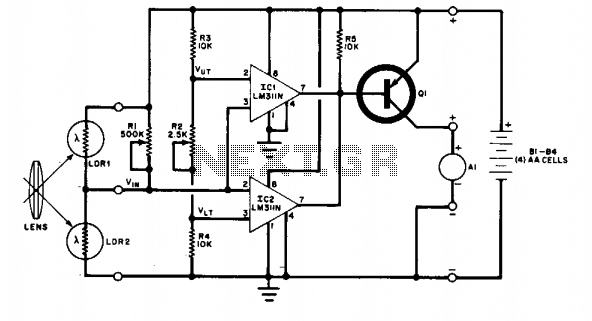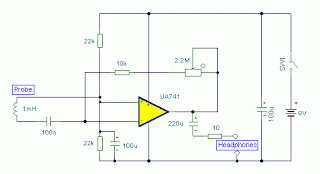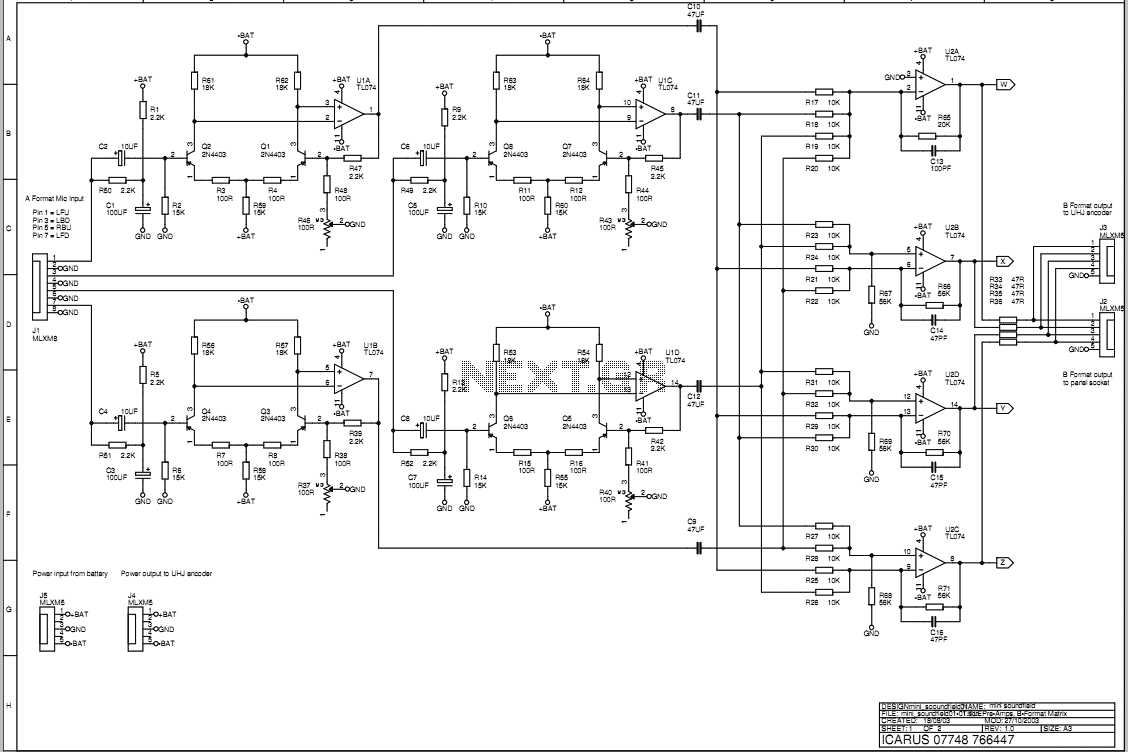
Field disturbance sensor-alarm

The change in ambient light triggers the alarm by changing the resistance of LDR1 and LDR2.
The circuit utilizes two light-dependent resistors (LDR1 and LDR2) to detect variations in ambient light levels. LDRs are passive components that exhibit a change in resistance based on the intensity of light falling on them; their resistance decreases as light increases. This property is essential for the operation of the alarm system.
In this configuration, LDR1 and LDR2 are arranged in a voltage divider setup. The voltage across one of the LDRs is monitored and compared to a reference voltage. When ambient light levels change, the resistance of the LDRs alters, leading to a corresponding change in the voltage across them. This change is critical for triggering the alarm.
A PNP transistor is employed to amplify the signal from the LDRs. The base of the PNP transistor is connected to the junction of the voltage divider formed by LDR1 and LDR2. When the voltage at the base exceeds a certain threshold, the transistor turns on, allowing current to flow from the collector to the emitter. This action activates the alarm system, indicating a significant change in ambient light.
To ensure proper operation, it is important to select a suitable PNP transistor that can handle the expected current and voltage levels in the circuit. Additionally, resistors may be included in the circuit to limit current and protect the components from damage.
Overall, this alarm system effectively utilizes the properties of LDRs and a PNP transistor to create a responsive and reliable light-triggered alarm.The change in ambient light triggers the alarm by changing resistance of LDRl and LDR2. use any regular pnp transistor.
The circuit utilizes two light-dependent resistors (LDR1 and LDR2) to detect variations in ambient light levels. LDRs are passive components that exhibit a change in resistance based on the intensity of light falling on them; their resistance decreases as light increases. This property is essential for the operation of the alarm system.
In this configuration, LDR1 and LDR2 are arranged in a voltage divider setup. The voltage across one of the LDRs is monitored and compared to a reference voltage. When ambient light levels change, the resistance of the LDRs alters, leading to a corresponding change in the voltage across them. This change is critical for triggering the alarm.
A PNP transistor is employed to amplify the signal from the LDRs. The base of the PNP transistor is connected to the junction of the voltage divider formed by LDR1 and LDR2. When the voltage at the base exceeds a certain threshold, the transistor turns on, allowing current to flow from the collector to the emitter. This action activates the alarm system, indicating a significant change in ambient light.
To ensure proper operation, it is important to select a suitable PNP transistor that can handle the expected current and voltage levels in the circuit. Additionally, resistors may be included in the circuit to limit current and protect the components from damage.
Overall, this alarm system effectively utilizes the properties of LDRs and a PNP transistor to create a responsive and reliable light-triggered alarm.The change in ambient light triggers the alarm by changing resistance of LDRl and LDR2. use any regular pnp transistor.





